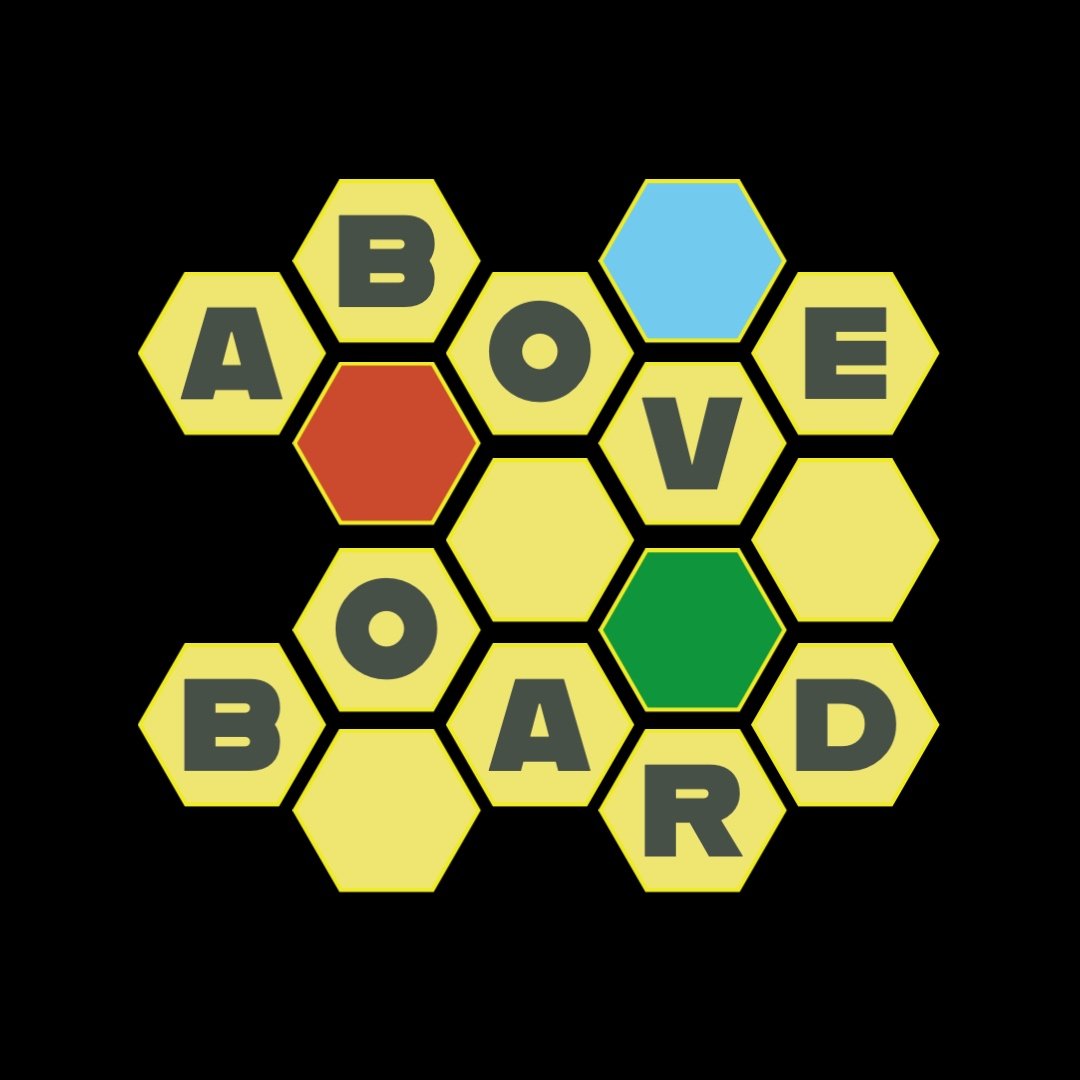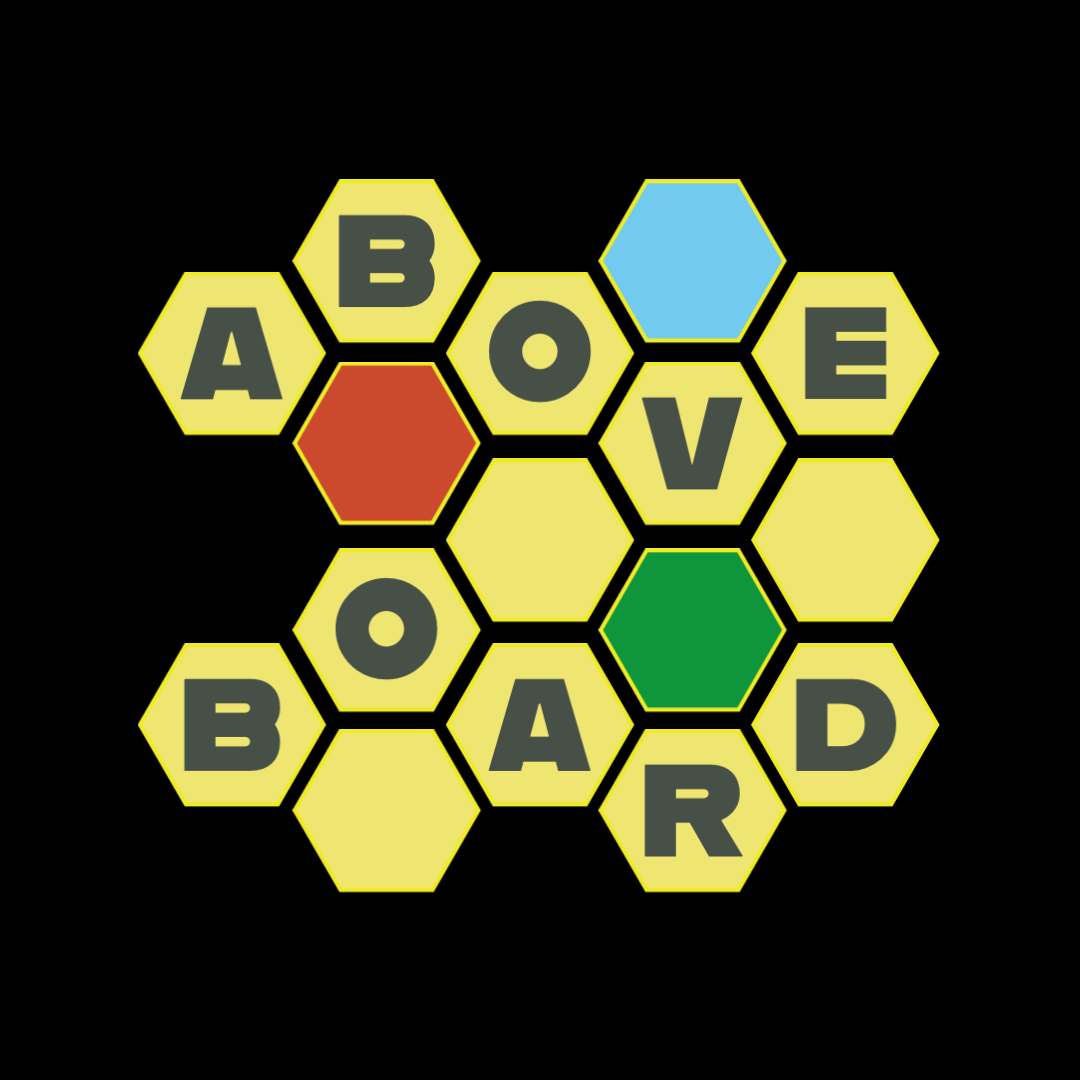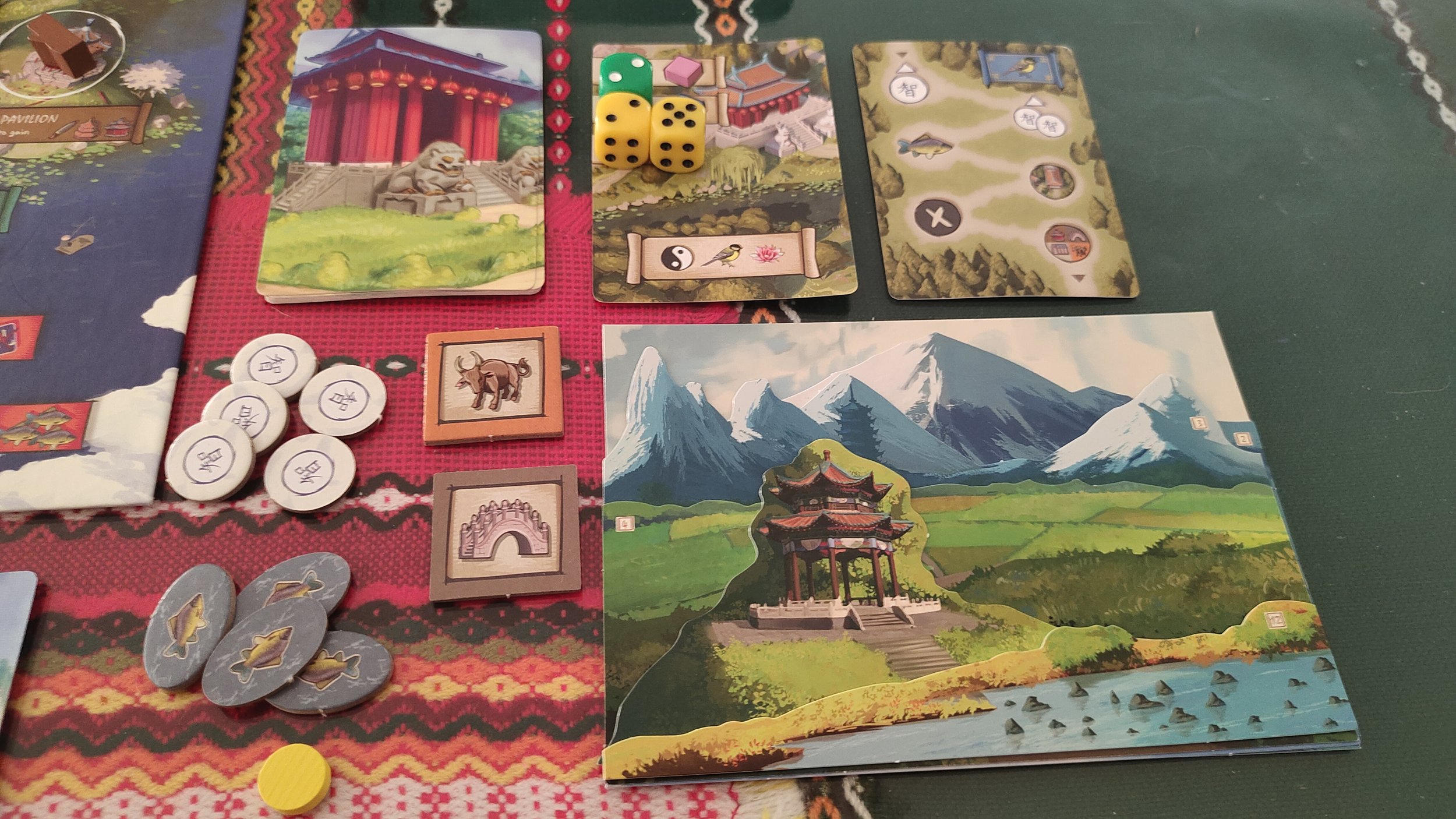Takahe’s Solo Den: Eternal Palace
1 - 5 Players 60 - 90 Minutes Age 14+
Designer: Steven Aramini
Artists: Jacqui Davis, Quentin Regnes
Publisher: Alley Cat Games
Love at the first sight…
This game certainly looks pretty! Eternal Palace is a game that has absolutely nooooo problem catching your eye. Bright, vivid and stunningly beautiful art on the game board, colourful dice, nice and chunky resources tokens… and painting features which when overlayed together make for breath-taking vistas. Now I know, don’t judge a book by its cover, however in case of Eternal Palace, the first impression is pretty strong and very, very convincing.
Still, the more important question is - does the game actually deliver solid gameplay and fun alongside the undoubtedly gorgeous presentation? Despite having a lukewarm reception on BGG (which I don’t honestly care about), I am happy to say that the Eternal Palace is a perfect filler Euro for when you want to cleanse your taste buds, either before or after playing something meatier. Perhaps that’s a bit of a vague summary, so let me give you a little bit more context.
Perfectly light and fittingly filling
Eternal Palace is a dice worker placement game with strong resource management and set collection elements, beautifully complementing the core gameplay. The goal of the game is simple – collect 8 painting pieces. After that, the end game scoring is triggered. Can’t be more straightforward than that. However, the speed with which you gain these pieces, and from which action spots, will greatly depend on how efficiently you manage to utilise not only your worker dice, but also your resources and advisors. Another thing you have to consider is how you maximise your scoring – Eternal Palace is veeeeery stingy with handing over victory points and you will have to go above (board😊) and beyond to scrape the bottom of the barrel for any leftover points lurking there.
How do you do it? There are several ways. The obvious and the easiest option is to climb up the various progress tracks (representing certain actions) as soon as possible. The first player that reaches the top spot of the track gets not only a painting piece but also a painting feature which counts as a point (every other player getting to the top will only claim the painting piece). You can also claim those features from other action locations once you fulfil the requirements (such as placing two discs of your colour in allocated spots).
Every little bit counts
Another way of scoring some additional vps is claiming the monuments – there are 4 of them scattered across the map and in order to claim them (alongside a painting piece) you have to pay the corresponding resource. However, once you do so, the price of claiming that same monument increases - so for instance, if the next player wants to take the Spring Pavilion from you, he has to pay one additional resource for it in order to do so. Finally, if you collect 8 painting pieces first, you get a painting completion token (worth 1 VP) and perhaps even the “longest run” token which is awarded to the person with the longest sequence of consecutively numbered painting layers.
Speaking from purely mechanical perspective, the dice worker placement and action selection mechanisms function as you would expect. You place one die or a group of dice onto an action spot of a matching number and execute the depicted action – collect resources, claim monuments, “buy” advisors, move up the eternal bridge etc. Since we are dealing with dice here, you might be questioning the luck factor inevitably involved in dice rolling.
Well, to mitigate unsatisfactory rolls, you can use “wisdom” tokens to increase/decrease the value of a die. There are several ways of gaining these tokens, however, bear in mind that any action already taken by you, or an opponent requires a fish to be paid in order to activate it again. So, there is a little bit of push your luck/race for specific action spots involved, which adds a nice little tension when strategising how to sequence your worker placements.
The highlight? Solo mode!
Now, how does Eternal Palace play solo? To be honest – I did not expect it to be so much fun! The solo bot called Master comes in 3 difficulty levels and various specialisations, each with a set of specific cards to drive the dice placement for the AI. Operating the bot is super-easy: you roll dice for both of you, you first decide what actions you want to take (and make groups of dice if needed), then you flip the bot’s solo card and place it’s dice on depicted spots.
If the bot has a die (or a group of dice) matching yours, it will prioritise that action, otherwise it just goes from top to bottom. It’s a smooth, easy, hassle-free solo bot that can still provide a solid “gut-punch” challenge as you never know how it’s dice will be grouped together, potentially endangering your plan for the round. The only thing that is giving you a slight edge over the bot is the turn order, which is decided at the beginning of the round and is based on the total number of pips on your dice vs the bot’s dice.
Yeah, it’s a lot of fun playing against the Master. And the reason is pretty clear to me – beauty in simplicity. The bot is perfectly fitting for this light Euro – it’s not of a David Turczi’s complexity, but it is also not a basic, action blocking dummy à la Automa Factory’s Viticulture.
It’s a nice middle ground: the bot takes actions, prioritises some of them based on it’s specialisation and thanks to it’s simple decision tree, it also tries to collect painting pieces in a sequence to try and get the “longest run” token in the end. Nothing fancy, just a simple but very clever design that will actively disrupt your plans and challenge you whenever possible.
Never turn down a good, solid game!
Eternal Palace might not be a ground-breaking Euro nor a title everyone will be talking about (looking at you, Ark Nova). But, that doesn’t mean it’s not light, fun Euro goodness. Just like Crown of Emara some time ago, this game provides a very enjoyable experience without too much bloat or padding, one you will most certainly want to come back to regularly (or just do another round since the solo game rarely lasts longer than 30 minutes!). In my books, that’s a sign of a very good game – wanting to play it again and again? Can’t ask for more!








